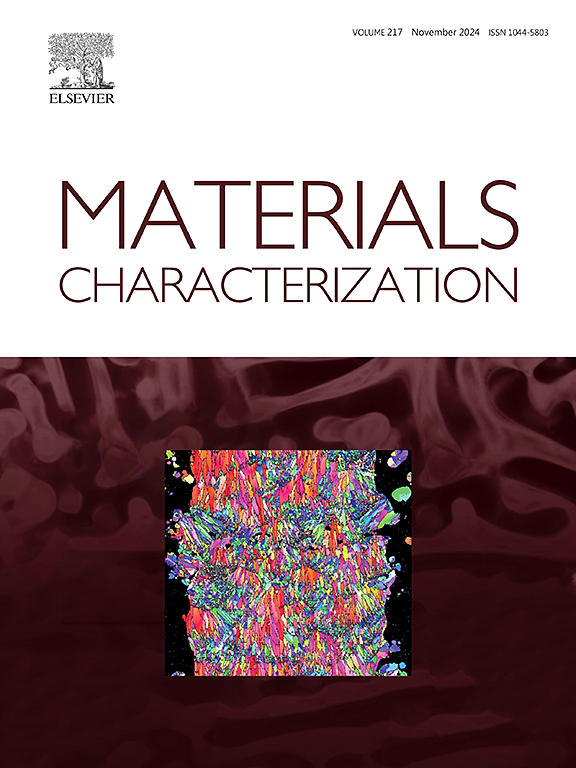Microstructure and mechanical properties of CoCrFeNiMn HEA/1060Al magnetic pulse welded joints
IF 4.8
2区 材料科学
Q1 MATERIALS SCIENCE, CHARACTERIZATION & TESTING
引用次数: 0
Abstract
CoCrFeNiMn high entropy alloy and 1060 Al can achieve high quality welded joints using magnetic pulse welding. The mechanical properties and microstructure observation were used to evaluate the joint properties and the dynamic deformation mechanism of welded joint. The findings of the quasi-static tensile test indicate that as the discharge energy increases, the fracture of the joint is keeping at 1060 Al, and the fracture form of the joint undergoes a transformation, shifting from a ductile fracture to a ductile-brittle mixed fracture. The higher the discharge energy is, the interface transition layer and mechanical interlocking become more pronounced, exhibiting distinctive interface characteristics such as “wavy” and “inverted hook-like” patterns. The transition layer of the welded joint is primarily constituted of amorphous phases comprising Al, Co, Cr, Fe, Ni and Mn, along with substantial granular AlxCoCrFeNiMn high entropy alloy. The primary bonding mechanisms of CoCrFeNiMn high entropy alloy/1060 Al welded joints are local melting and rapid solidification. The dynamic deformation mechanism of the CoCrFeNiMn high entropy alloy matrix under an extremely high strain rate (106–107 s−1) of electromagnetic pulse shock is dominated by dislocation motion, rather than the more commonly observed twins and adiabatic shear bands.
求助全文
约1分钟内获得全文
求助全文
来源期刊

Materials Characterization
工程技术-材料科学:表征与测试
CiteScore
7.60
自引率
8.50%
发文量
746
审稿时长
36 days
期刊介绍:
Materials Characterization features original articles and state-of-the-art reviews on theoretical and practical aspects of the structure and behaviour of materials.
The Journal focuses on all characterization techniques, including all forms of microscopy (light, electron, acoustic, etc.,) and analysis (especially microanalysis and surface analytical techniques). Developments in both this wide range of techniques and their application to the quantification of the microstructure of materials are essential facets of the Journal.
The Journal provides the Materials Scientist/Engineer with up-to-date information on many types of materials with an underlying theme of explaining the behavior of materials using novel approaches. Materials covered by the journal include:
Metals & Alloys
Ceramics
Nanomaterials
Biomedical materials
Optical materials
Composites
Natural Materials.
 求助内容:
求助内容: 应助结果提醒方式:
应助结果提醒方式:


